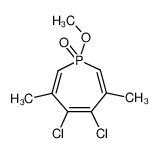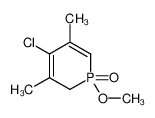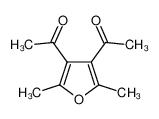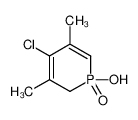1.Identification
1.1 GHS Product identifier
| Product name | chloroform |
|---|
1.2 Other means of identification
| Product number | - |
|---|---|
| Other names | HCC20 |
1.3 Recommended use of the chemical and restrictions on use
| Identified uses | For industry use only. Volatile organic compounds |
|---|---|
| Uses advised against | no data available |
1.4 Supplier's details
| Company | MOLBASE (Shanghai) Biotechnology Co., Ltd. |
|---|---|
| Address | Floor 4 & 5, Building 12, No. 1001 North Qinzhou Road, Xuhui District, Shanghai, China |
| Telephone | +86(21)64956998 |
| Fax | +86(21)54365166 |
1.5 Emergency phone number
| Emergency phone number | +86-400-6021-666 |
|---|---|
| Service hours | Monday to Friday, 9am-5pm (Standard time zone: UTC/GMT +8 hours). |
2.Hazard identification
2.1 Classification of the substance or mixture
Acute toxicity - Oral, Category 4
Skin irritation, Category 2
Eye irritation, Category 2
Acute toxicity - Inhalation, Category 3
Carcinogenicity, Category 2
Specific target organ toxicity – repeated exposure, Category 1
Reproductive toxicity, Category 2
2.2 GHS label elements, including precautionary statements
| Pictogram(s) |   |
|---|---|
| Signal word | Danger |
| Hazard statement(s) | H302 Harmful if swallowed H315 Causes skin irritation H319 Causes serious eye irritation H331 Toxic if inhaled H351 Suspected of causing cancer H372 Causes damage to organs through prolonged or repeated exposure H361d |
| Precautionary statement(s) | |
| Prevention | P264 Wash ... thoroughly after handling. P270 Do not eat, drink or smoke when using this product. P280 Wear protective gloves/protective clothing/eye protection/face protection. P261 Avoid breathing dust/fume/gas/mist/vapours/spray. P271 Use only outdoors or in a well-ventilated area. P201 Obtain special instructions before use. P202 Do not handle until all safety precautions have been read and understood. P260 Do not breathe dust/fume/gas/mist/vapours/spray. |
| Response | P301+P312 IF SWALLOWED: Call a POISON CENTER/doctor/…if you feel unwell. P330 Rinse mouth. P302+P352 IF ON SKIN: Wash with plenty of water/... P321 Specific treatment (see ... on this label). P332+P313 If skin irritation occurs: Get medical advice/attention. P362+P364 Take off contaminated clothing and wash it before reuse. P305+P351+P338 IF IN EYES: Rinse cautiously with water for several minutes. Remove contact lenses, if present and easy to do. Continue rinsing. P337+P313 If eye irritation persists: Get medical advice/attention. P304+P340 IF INHALED: Remove person to fresh air and keep comfortable for breathing. P311 Call a POISON CENTER/doctor/… P308+P313 IF exposed or concerned: Get medical advice/ attention. P314 Get medical advice/attention if you feel unwell. |
| Storage | P403+P233 Store in a well-ventilated place. Keep container tightly closed. P405 Store locked up. |
| Disposal | P501 Dispose of contents/container to ... |
2.3 Other hazards which do not result in classification
none
3.Composition/information on ingredients
3.1 Substances
| Chemical name | Common names and synonyms | CAS number | EC number | Concentration |
|---|---|---|---|---|
| chloroform | chloroform | 67-66-3 | none | 100% |
4.First-aid measures
4.1 Description of necessary first-aid measures
General advice
Consult a physician. Show this safety data sheet to the doctor in attendance.
If inhaled
Fresh air, rest. Artificial respiration may be needed. Refer for medical attention.
In case of skin contact
Remove contaminated clothes. Rinse skin with plenty of water or shower. Refer for medical attention .
In case of eye contact
First rinse with plenty of water for several minutes (remove contact lenses if easily possible), then refer for medical attention.
If swallowed
Rinse mouth. Give one or two glasses of water to drink. Rest. Refer for medical attention .
4.2 Most important symptoms/effects, acute and delayed
It is classified as moderately toxic. Probable oral lethal dose for humans is 0.5 to 5 g/kg (between 1 ounce and 1 pint) for a 150 lb. person. The mean lethal dose is probably near 1 fluid ounce (44 g). It is a human suspected carcinogen. Also, it is a central nervous system depressant and a gastrointestinal irritant. It has caused rapid death attributable to cardiac arrest and delayed death from liver and kidney damage. (EPA, 1998)
4.3 Indication of immediate medical attention and special treatment needed, if necessary
Immediate first aid: Ensure that adequate decontamination has been carried out. If patient is not breathing, start artificial respiration, preferably with a demand-valve resuscitator, bag-valve-mask device, or pocket mask, as trained. Perform CPR as necessary. Immediately flush contaminated eyes with gently flowing water. Do not induce vomiting. If vomiting occurs, lean patient forward or place on left side (head-down position, if possible) to maintain an open airway and prevent aspiration. Keep patient quiet and maintain normal body temperature. Obtain medical attention. /Halogenated aliphatic hydrocarbons and related compounds/
5.Fire-fighting measures
5.1 Extinguishing media
Suitable extinguishing media
Use water spray to keep fire-exposed containers cool. Extinguish fire using agent suitable for surrounding fire.
5.2 Specific hazards arising from the chemical
Container may explode in the heat of fire. When heated it liberates phosgene, hydrogen chloride, chlorine and toxic and corrosive oxides of carbon and chlorine. Chloroform explodes when in contact with aluminum powder or magnesium powder or with alkali metals (e.g., lithium, sodium, and potassium) and dinitrogen tetroxide. It reacts vigorously with acetone in the presence of potassium hydroxide or calcium hydroxide. It is oxidized by strong oxidizers such as chromic acid forming phosgene and chlorine. It reacts vigorously with triisopropylphosphine. It develops acidity from prolonged exposure to air and light. (EPA, 1998)
5.3 Special protective actions for fire-fighters
Wear self-contained breathing apparatus for firefighting if necessary.
6.Accidental release measures
6.1 Personal precautions, protective equipment and emergency procedures
Use personal protective equipment. Avoid dust formation. Avoid breathing vapours, mist or gas. Ensure adequate ventilation. Evacuate personnel to safe areas. Avoid breathing dust. For personal protection see section 8.
6.2 Environmental precautions
Evacuate danger area! Consult an expert! Personal protection: complete protective clothing including self-contained breathing apparatus. Do NOT let this chemical enter the environment. Collect leaking and spilled liquid in sealable containers as far as possible. Absorb remaining liquid in sand or inert absorbent. Then store and dispose of according to local regulations.
6.3 Methods and materials for containment and cleaning up
1. Ventilate area of spill or leak. 2. Collect for reclamation or absorb in vermiculite, dry sand, earth, or a similar material.
7.Handling and storage
7.1 Precautions for safe handling
Avoid contact with skin and eyes. Avoid formation of dust and aerosols. Avoid exposure - obtain special instructions before use.Provide appropriate exhaust ventilation at places where dust is formed. For precautions see section 2.2.
7.2 Conditions for safe storage, including any incompatibilities
Separated from food and feedstuffs and incompatible materials. See Chemical Dangers. Ventilation along the floor.Keep in tightly closed containers; storage code: LI
8.Exposure controls/personal protection
8.1 Control parameters
Occupational Exposure limit values
NIOSH considers chloroform to be a potential occupational carcinogen.
Recommended Exposure Limit: 60 Min Short-Term Exposure Limit: 2 ppm (9.78 mg/cu m).
Biological limit values
no data available
8.2 Appropriate engineering controls
Handle in accordance with good industrial hygiene and safety practice. Wash hands before breaks and at the end of workday.
8.3 Individual protection measures, such as personal protective equipment (PPE)
Eye/face protection
Safety glasses with side-shields conforming to EN166. Use equipment for eye protection tested and approved under appropriate government standards such as NIOSH (US) or EN 166(EU).
Skin protection
Wear impervious clothing. The type of protective equipment must be selected according to the concentration and amount of the dangerous substance at the specific workplace. Handle with gloves. Gloves must be inspected prior to use. Use proper glove removal technique(without touching glove's outer surface) to avoid skin contact with this product. Dispose of contaminated gloves after use in accordance with applicable laws and good laboratory practices. Wash and dry hands. The selected protective gloves have to satisfy the specifications of EU Directive 89/686/EEC and the standard EN 374 derived from it.
Respiratory protection
Wear dust mask when handling large quantities.
Thermal hazards
no data available
9.Physical and chemical properties
| Physical state | Colorless liquid |
|---|---|
| Colour | Clear, colorless liquid |
| Odour | Pleasant, etheric, nonirritating |
| Melting point/ freezing point | -63 °C |
| Boiling point or initial boiling point and boiling range | 60.5-61.5°C(lit.) |
| Flammability | Noncombustible LiquidNot combustible. See Notes. Gives off irritating or toxic fumes (or gases) in a fire. |
| Lower and upper explosion limit / flammability limit | no data available |
| Flash point | 60.5-61.5°C |
| Auto-ignition temperature | Not flammable (USCG, 1999) |
| Decomposition temperature | no data available |
| pH | no data available |
| Kinematic viscosity | 5.63 millipoises at 20°C; 5.10 millipoises at 30°C |
| Solubility | In water:8 g/L (20 ºC) |
| Partition coefficient n-octanol/water (log value) | log Kow = 1.97 |
| Vapour pressure | 160 mm Hg ( 20 °C) |
| Density and/or relative density | 1.48g/mLat 25°C |
| Relative vapour density | 4.1 (vs air) |
| Particle characteristics | no data available |
10.Stability and reactivity
10.1 Reactivity
no data available
10.2 Chemical stability
Decomposes at ordinary temp in sunlight in the absence of air, and in the dark in the presence of air.
10.3 Possibility of hazardous reactions
Not combustible.The vapour is heavier than air.A mixture of acetone and CHLOROFORM in a residue bottle exploded. Since addition of acetone to chloroform in the presence of base will result in a highly exothermic reaction, it is thought that a base was in the bottle. [MCA Case History 1661(1970)]. Powdered aluminum and carbon tetrachloride (also methyl chloride and chloroform or mixtures of these chemicals) exploded when heated (to 153° C) and by impact, [Chem. Eng. News 32:258(1954); UL Bull. Research 34 (1945), ASESB Pot. Incid. 39(1968)]. An inadequately cooled addition of sodium to a chloroform-methanol mixture (sodium methoxide) caused a violent explosion, [MCA Case History No. 693]. It is incompatible with dinitrogen tetraoxide, fluorine, sodium metal and alcohols, nitromethane, and triisopropylphosphine.
10.4 Conditions to avoid
no data available
10.5 Incompatible materials
Mixtures with dinitrogen tetraoxide are explosive when subjected to shock of 25 g TNT equiv or less.
10.6 Hazardous decomposition products
The products of oxidative breakdown include phosgene, hydrogen chloride, chlorine, carbon dioxide, and water.
11.Toxicological information
Acute toxicity
- Oral: LD50 White rat oral 2180 mg/kg
- Inhalation: LC50 Rat inhalation 47,702 mg/cu m/4 hr
- Dermal: no data available
Skin corrosion/irritation
no data available
Serious eye damage/irritation
no data available
Respiratory or skin sensitization
no data available
Germ cell mutagenicity
no data available
Carcinogenicity
EPA: Probable human carcinogen. IARC: Possibly carcinogenic to humans. NTP: Reasonably anticipated to be a human carcinogen
Reproductive toxicity
Little information is available on the reproductive or developmental effects of chloroform in humans, via any route of exposure. A possible association between certain birth outcomes (e.g., low birth weight, cleft palate) and consumption of contaminated drinking water was reported. However, because multiple contaminants were present, the role of chloroform is unclear. Animal studies have demonstrated developmental effects, such as decreased fetal body weight, fetal resorptions, and malformations in the offspring of animals exposed to chloroform via inhalation. Reproductive effects, such as decreased conception rates, decreased ability to maintain pregnancy, and an increase in the percentage of abnormal sperm were observed in animals exposed to chloroform through inhalation. Animal studies have noted decreased fetal weight, increased fetal resorptions, but no evidence of birth defects, in animals orally exposed to chloroform.
STOT-single exposure
no data available
STOT-repeated exposure
no data available
Aspiration hazard
no data available
12.Ecological information
12.1 Toxicity
- Toxicity to fish: LC50; Species: Danio rerio (Zebra danio); Conditions: freshwater, flow through, 23°C, pH 8.15; Concentration: 121000 ug/L for 48 hr
- Toxicity to daphnia and other aquatic invertebrates: EC50; Species: Daphnia magna (Water flea); Conditions: freshwater, renewal, 25°C, pH >7; Concentration: 79000 ug/L for 24 hr; Effect: behavior, equilibrium
- Toxicity to algae: EC50; Species: Scenedesmus subspicatus (Green algae, log growth phase); Conditions: freshwater, static, 24°C, pH 8.0-9.3; Concentration: 560000 ug/L for 48 hr; Effect: decreased population biomass
- Toxicity to microorganisms: no data available
12.2 Persistence and degradability
Chloroform was reduced from 0.12 mg/L to <40 ug/L after anaerobic digestion at 25°C for 53 days and then was digested aerobically for 20 days which reduced chloroform to a not detected level(1). Chloroform was not degraded aerobically or anaerobically in an aquifer storage and recovery site(2).
12.3 Bioaccumulative potential
The BCF values for chloroform range from 2.9-10.35(1). A log bioconcentration factor <1 for 4 species of fish have been reported(2,3). An experimental log BCF of 0.78 was also reported for chloroform(4). According to a classification scheme(5), these BCF values suggest the potential for bioconcentration in aquatic organisms is low.
12.4 Mobility in soil
A soil sorption study was conducted on chloroform in three distinctly different soils(1). Soils used were from Missouri (composed of 11.4% sand, 52.7% silt, 33.4% clay, 2.4% organic matter, at pH 6.9), California (composed of 45.1% sand, 35.2% silt, 21.7% clay, organic matter 1.7%, at pH 8.1), and Florida (composed of 91.7% sand, 6.3% silt, 2.0% clay, 1.6% organic matter, at pH 4.7)(1). The ratio of the amount of contaminant adsorbed in micrograms per gram of soil to the equilibrium concn in ppm was used to calculate a Kd value of 2.133 in the Missouri soil, 1.941 in the California soil, and 1.763 in the Florida soil(1). These values correspond to a Koc value ranging from 153-196 based upon the relationship between Kd and Koc(2). Chloroform is adsorbed most strongly to peat moss, less strongly to clay, very slightly to dolomite limestone and not at all to sand(3). The Koc values measured for 2 soils was 34; 3 other soils with the lowest organic carbon content in the same study gave no appreciable adsorption(4). Field experiments in which chloroform was injected into an aquifer and the concn in a series of observation wells determined, demonstrated that chloroform is very poorly retained by aquifer material (retardation factor 2-4), less so than other C1- and C2-halogenated compounds studied(4-5). Laboratory percolation studies with a sandy soil gave similar results (retardation factor <1.5)(6). Chloroform was reported to have a Koc of 65(7), 55(8), 47(9) and 34(10). According to a classification scheme(11), these Koc values suggest that chloroform is expected to have very high to moderate mobility in soil.
12.5 Other adverse effects
no data available
13.Disposal considerations
13.1 Disposal methods
Product
The material can be disposed of by removal to a licensed chemical destruction plant or by controlled incineration with flue gas scrubbing. Do not contaminate water, foodstuffs, feed or seed by storage or disposal. Do not discharge to sewer systems.
Contaminated packaging
Containers can be triply rinsed (or equivalent) and offered for recycling or reconditioning. Alternatively, the packaging can be punctured to make it unusable for other purposes and then be disposed of in a sanitary landfill. Controlled incineration with flue gas scrubbing is possible for combustible packaging materials.
14.Transport information
14.1 UN Number
| ADR/RID: UN1888 | IMDG: UN1888 | IATA: UN1888 |
14.2 UN Proper Shipping Name
| ADR/RID: CHLOROFORM |
| IMDG: CHLOROFORM |
| IATA: CHLOROFORM |
14.3 Transport hazard class(es)
| ADR/RID: 6.1 | IMDG: 6.1 | IATA: 6.1 |
14.4 Packing group, if applicable
| ADR/RID: III | IMDG: III | IATA: III |
14.5 Environmental hazards
| ADR/RID: no | IMDG: no | IATA: no |
14.6 Special precautions for user
no data available
14.7 Transport in bulk according to Annex II of MARPOL 73/78 and the IBC Code
no data available
15.Regulatory information
15.1 Safety, health and environmental regulations specific for the product in question
| Chemical name | Common names and synonyms | CAS number | EC number |
|---|---|---|---|
| chloroform | chloroform | 67-66-3 | none |
| European Inventory of Existing Commercial Chemical Substances (EINECS) | Listed. | ||
| EC Inventory | Listed. | ||
| United States Toxic Substances Control Act (TSCA) Inventory | Listed. | ||
| China Catalog of Hazardous chemicals 2015 | Listed. | ||
| New Zealand Inventory of Chemicals (NZIoC) | Listed. | ||
| Philippines Inventory of Chemicals and Chemical Substances (PICCS) | Listed. | ||
| Vietnam National Chemical Inventory | Listed. | ||
| Chinese Chemical Inventory of Existing Chemical Substances (China IECSC) | Listed. | ||
16.Other information
Information on revision
| Creation Date | Aug 16, 2017 |
|---|---|
| Revision Date | Aug 16, 2017 |
Abbreviations and acronyms
- CAS: Chemical Abstracts Service
- ADR: European Agreement concerning the International Carriage of Dangerous Goods by Road
- RID: Regulation concerning the International Carriage of Dangerous Goods by Rail
- IMDG: International Maritime Dangerous Goods
- IATA: International Air Transportation Association
- TWA: Time Weighted Average
- STEL: Short term exposure limit
- LC50: Lethal Concentration 50%
- LD50: Lethal Dose 50%
- EC50: Effective Concentration 50%
References
- IPCS - The International Chemical Safety Cards (ICSC), website: http://www.ilo.org/dyn/icsc/showcard.home
- HSDB - Hazardous Substances Data Bank, website: https://toxnet.nlm.nih.gov/newtoxnet/hsdb.htm
- IARC - International Agency for Research on Cancer, website: http://www.iarc.fr/
- eChemPortal - The Global Portal to Information on Chemical Substances by OECD, website: http://www.echemportal.org/echemportal/index?pageID=0&request_locale=en
- CAMEO Chemicals, website: http://cameochemicals.noaa.gov/search/simple
- ChemIDplus, website: http://chem.sis.nlm.nih.gov/chemidplus/chemidlite.jsp
- ERG - Emergency Response Guidebook by U.S. Department of Transportation, website: http://www.phmsa.dot.gov/hazmat/library/erg
- Germany GESTIS-database on hazard substance, website: http://www.dguv.de/ifa/gestis/gestis-stoffdatenbank/index-2.jsp
- ECHA - European Chemicals Agency, website: https://echa.europa.eu/


















